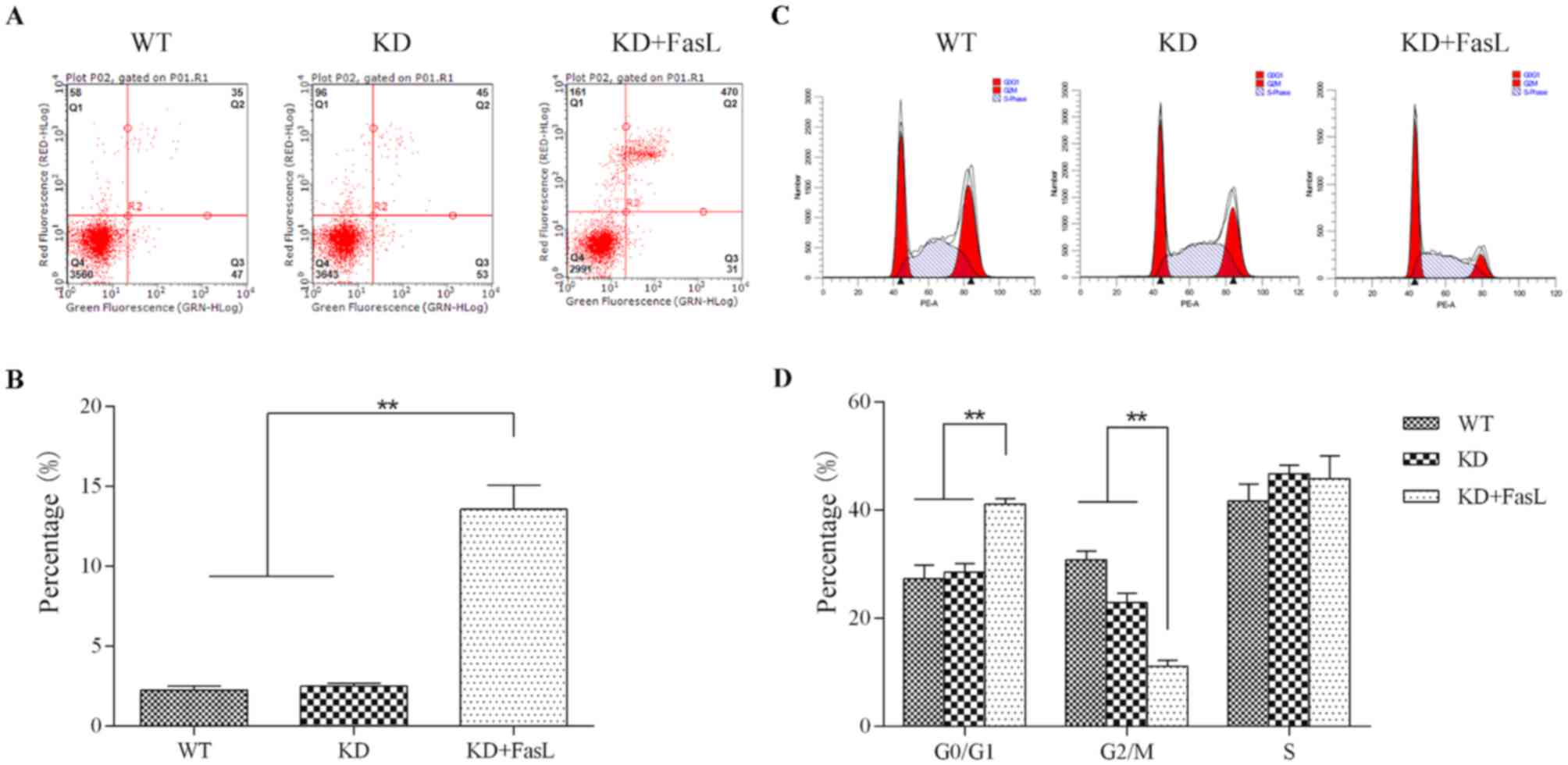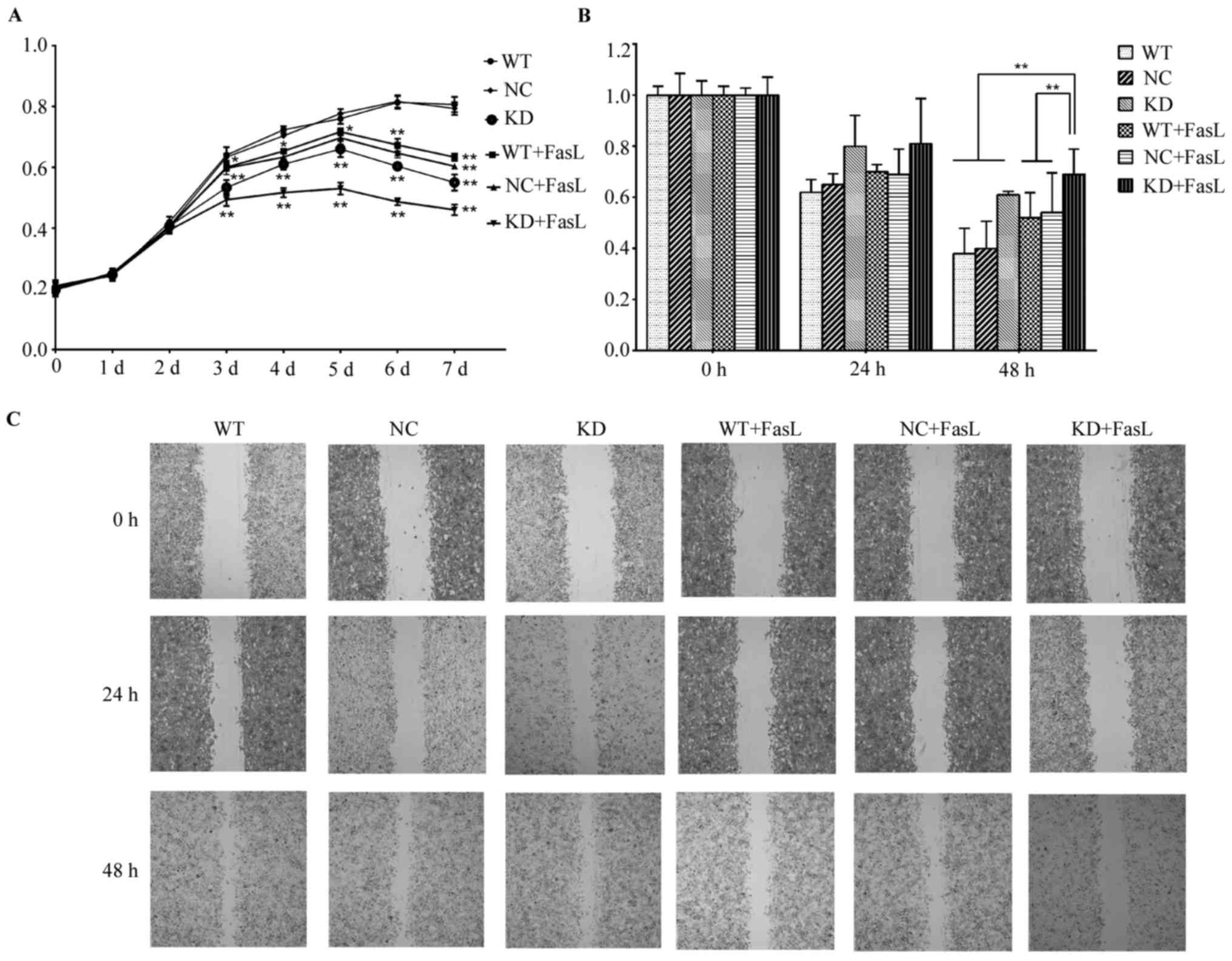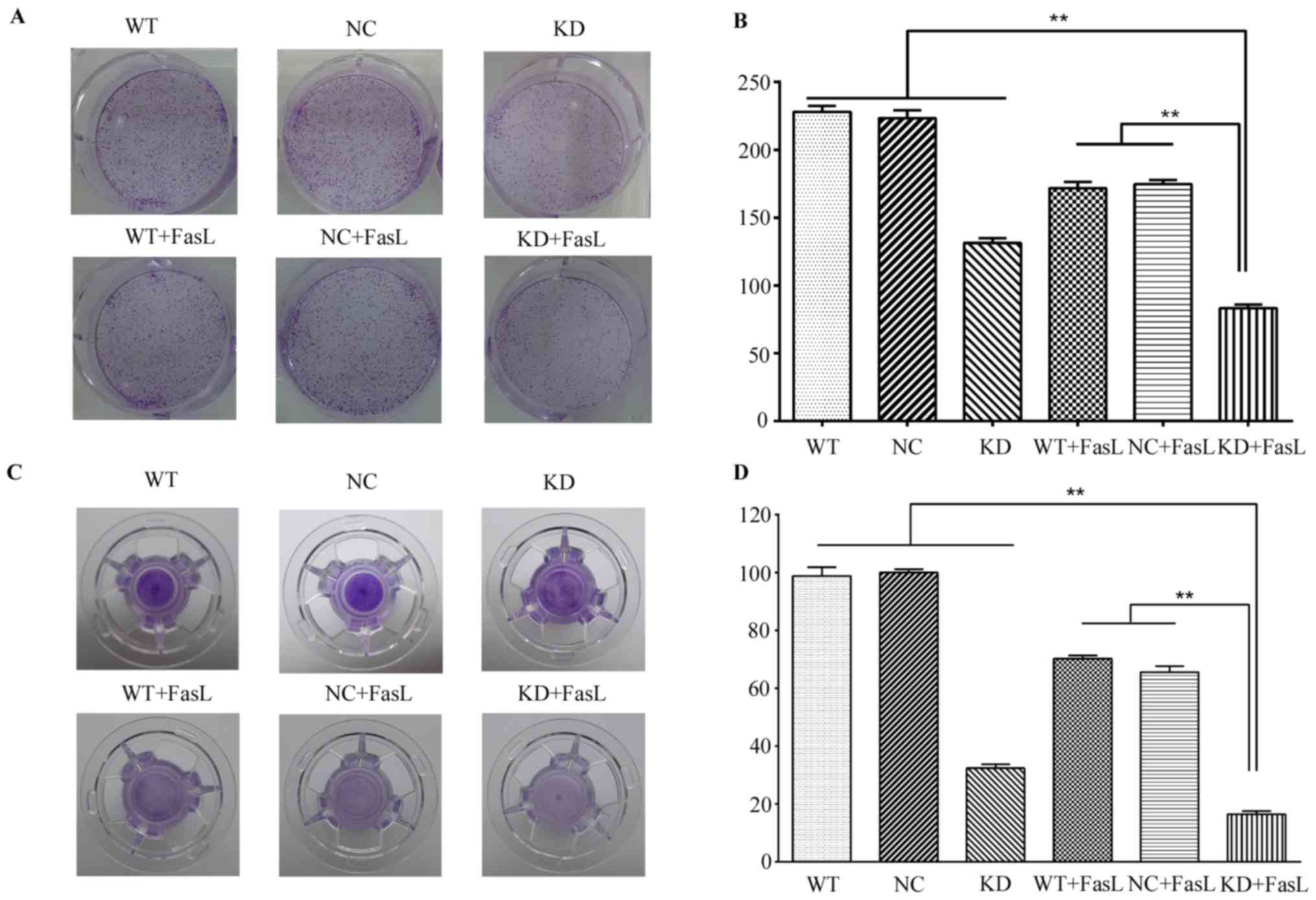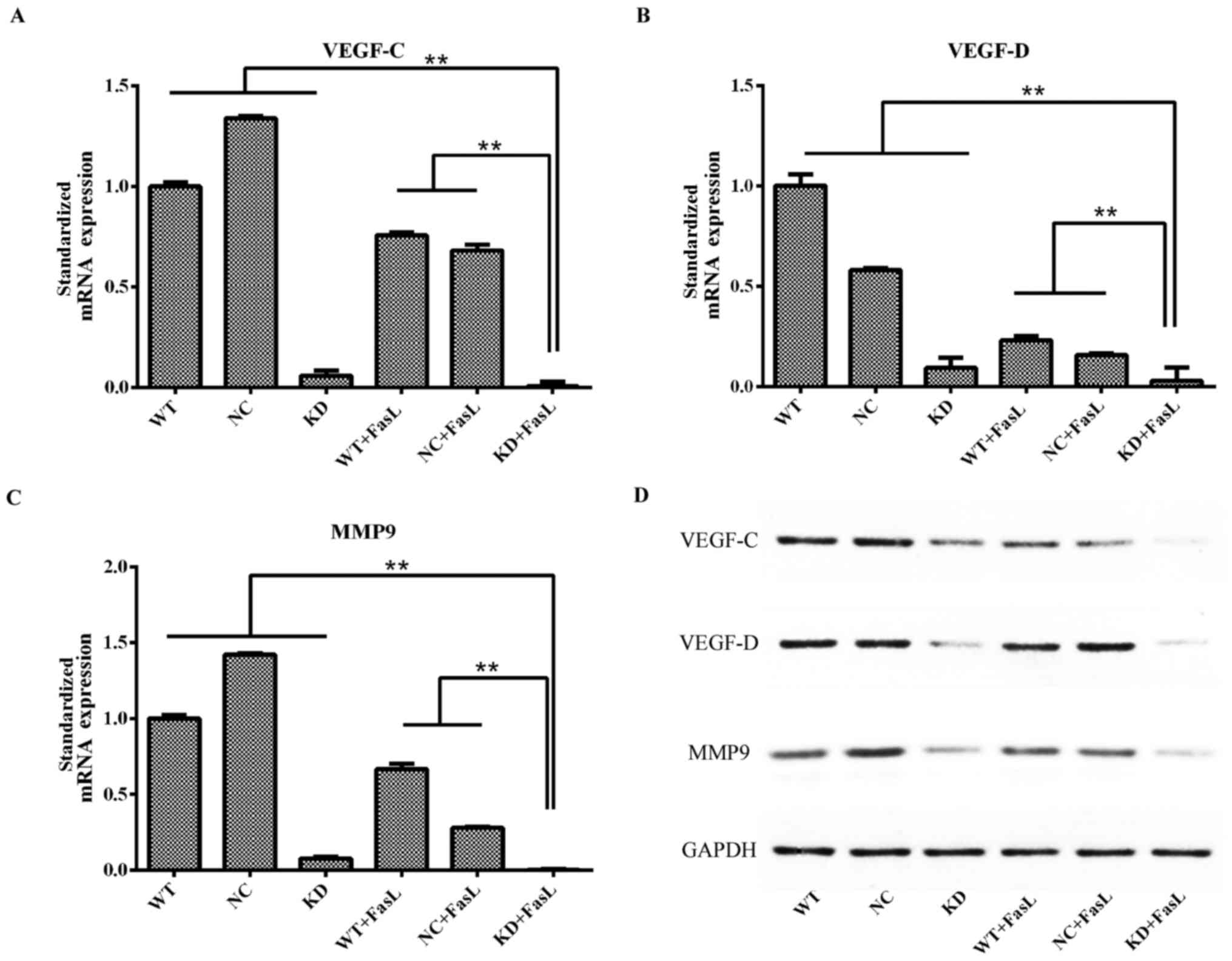|
1
|
Ferlay J, Soerjomataram I, Dikshit R, Eser
S, Mathers C, Rebelo M, Parkin DM, Forman D and Bray F: Cancer
incidence and mortality worldwide: Sources, methods and major
patterns in GLOBOCAN 2012. Int J Cancer. 136:E359–E386. 2015.
View Article : Google Scholar : PubMed/NCBI
|
|
2
|
Altekruse S, McGlynn K and Reichman M:
Hepatocellular carcinoma incidence, mortality, and survival trends
in the United States from 1975 to 2005. J Clin Oncol. 27:1485–1491.
2009. View Article : Google Scholar : PubMed/NCBI
|
|
3
|
Forner A, Llovet J and Bruix J:
Hepatocellular carcinoma. Lancet. 379:1245–1255. 2012. View Article : Google Scholar : PubMed/NCBI
|
|
4
|
Xu X, Chen W, Miao R, Zhou YY, Wang ZX,
Zhang LQ, Qu K, Pang Q, Wang RT and Liu C: Survival analysis of
hepatocellular carcinoma: A comparison between young patients and
aged patients. Chin Med J (Engl). 128:1793–1800. 2015. View Article : Google Scholar : PubMed/NCBI
|
|
5
|
Darbari A, Sabin KM, Shapiro CN and
Schwarz KB: Epidemiology of primary hepatic malignancies in U.S.
children. Hepatology. 38:560–566. 2003. View Article : Google Scholar : PubMed/NCBI
|
|
6
|
Meyers RL, Rowland JR, Krailo M, Chen Z,
Katzenstein HM and Malogolowkin MH: Predictive power of
pretreatment prognostic factors in children with hepatoblastoma: A
report from the Children's Oncology Group. Pediatr Blood Cancer.
53:1016–1022. 2009. View Article : Google Scholar : PubMed/NCBI
|
|
7
|
Watanabe K: Current chemotherapeutic
approaches for hepatoblastoma. Int J Clin Oncol. 18:955–961. 2013.
View Article : Google Scholar : PubMed/NCBI
|
|
8
|
Zsiros J, Brugieres L, Brock P, Roebuck D,
Maibach R, Zimmermann A, Childs M, Pariente D, Laithier V, Otte JB,
et al: Dose-dense cisplatin-based chemotherapy and surgery for
children with high-risk hepatoblastoma (SIOPEL-4): A prospective,
single-arm, feasibility study. Lancet Oncol. 14:834–842. 2013.
View Article : Google Scholar : PubMed/NCBI
|
|
9
|
Bell D, Ranganathan S, Tao J and Monga SP:
Novel advances in understanding of molecular pathogenesis of
hepatoblastoma: A Wnt/β-catenin perspective. Gene Expr. 17:141–154.
2017. View Article : Google Scholar : PubMed/NCBI
|
|
10
|
Ganju A, Khan S, Hafeez BB, Behrman SW,
Yallapu MM, Chauhan SC and Jaggi M: miRNA nanotherapeutics for
cancer. Drug Discov Today. 22:424–432. 2017. View Article : Google Scholar : PubMed/NCBI
|
|
11
|
Wang Z, Wang N, Liu P and Xie X: AMPK and
cancer. EXS. 107:203–226. 2016.PubMed/NCBI
|
|
12
|
De la Rosa AJ, Gomez MA, Morales S,
Padillo FJ and Muntane J: CD95 signaling in cancer treatment. Curr
Pharm Des. 20:2809–2818. 2014. View Article : Google Scholar : PubMed/NCBI
|
|
13
|
Ogasawara J, Watanabe-Fukunaga R, Adachi
M, Matsuzawa A, Kasugai T, Kitamura Y, Itoh N, Suda T and Nagata S:
Lethal effect of the anti-Fas antibody in mice. Nature.
364:806–809. 1993. View
Article : Google Scholar : PubMed/NCBI
|
|
14
|
Suda T, Takahashi T, Golstein P and Nagata
S: Molecular cloning and expression of the Fas ligand, a novel
member of the tumor necrosis factor family. Cell. 75:1169–1178.
1993. View Article : Google Scholar : PubMed/NCBI
|
|
15
|
Mor G, Gutierrez L, Eliza M, Kahyaoglu F
and Arici A: Fas-fas ligand system-induced apoptosis in human
placenta and gestational trophoblastic disease. Am J Reprod
Immunol. 40:89–94. 1998. View Article : Google Scholar : PubMed/NCBI
|
|
16
|
Müschen M, Warskulat U and Beckmann M:
Defining CD95 as a tumor suppressor gene. J Mol Med (Berl).
78:312–325. 2000. View Article : Google Scholar : PubMed/NCBI
|
|
17
|
Kim SK, Yoon YD, Park YS, Seo JT and Kim
JH: Involvement of the Fas-Fas ligand system and active caspase-3
in abnormal apoptosis in human testes with maturation arrest and
Sertoli cell-only syndrome. Fertil Steril. 87:547–553. 2007.
View Article : Google Scholar : PubMed/NCBI
|
|
18
|
Lau HT, Yu M, Fontana A and Stoeckert C
Jr: Prevention of islet allograft rejection with engineered
myoblasts expressing FasL in mice. Science. 273:109–112. 1996.
View Article : Google Scholar : PubMed/NCBI
|
|
19
|
Pitti RM, Marsters SA, Lawrence DA, Roy M,
Kischkel FC, Dowd P, Huang A, Donahue CJ, Sherwood SW, Baldwin DT,
et al: Genomic amplification of a decoy receptor for Fas ligand in
lung and colon cancer. Nature. 396:699–703. 1998. View Article : Google Scholar : PubMed/NCBI
|
|
20
|
Liu YQ, Mu ZQ, You S, Tashiro S, Onodera S
and Ikejima T: Fas/FasL signaling allows extracelluar-signal
regulated kinase to regulate cytochrome c release in
oridonin-induced apoptotic U937 cells. Biol Pharm Bull.
29:1873–1879. 2006. View Article : Google Scholar : PubMed/NCBI
|
|
21
|
Connolly K, Cho YH, Duan R, Fikes J,
Gregorio T, LaFleur DW, Okoye Z, Salcedo TW, Santiago G, Ullrich S,
et al: In vivo inhibition of Fas ligand-mediated killing by TR6, a
Fas ligand decoy receptor. J Pharmacol Exp Ther. 298:25–33.
2001.PubMed/NCBI
|
|
22
|
Ge Z, Sanders AJ, Ye L and Jiang WG:
Aberrant expression and function of death receptor-3 and death
decoy receptor-3 in human cancer. Exp Ther Med. 2:167–172. 2011.
View Article : Google Scholar : PubMed/NCBI
|
|
23
|
Wu Y, Han B, Sheng H, Lin M, Moore PA,
Zhang J and Wu J: Clinical significance of detecting elevated serum
DcR3/TR6/M68 in malignant tumor patients. Int J Cancer.
105:724–732. 2003. View Article : Google Scholar : PubMed/NCBI
|
|
24
|
Shen HW, Gao SL, Wu YL and Peng SY:
Overexpression of decoy receptor 3 in hepatocellular carcinoma and
its association with resistance to Fas ligand-mediated apoptosis.
World J Gastroenterol. 11:5926–5930. 2005. View Article : Google Scholar : PubMed/NCBI
|
|
25
|
Chen G and Luo D: Expression of decoy
receptor 3 in liver tissue microarrays. Nat Med J India.
21:275–278. 2008.
|
|
26
|
Yu W, Xu YC, Tao Y, He P, Li Y, Wu T, Zhu
YP, Li J, Wu JX and Dai J: DcR3 regulates the growth and metastatic
potential of SW480 colon cancer cells. Oncol Rep. 30:2741–2748.
2013. View Article : Google Scholar : PubMed/NCBI
|
|
27
|
Zhou XN, Li GM, Xu YC, Zhao TJ and Wu JX:
Knockdown of decoy receptor 3 impairs growth and invasiveness of
hepatocellular carcinoma cell line of HepG2. Chin Med J (Engl).
129:2623–2629. 2016. View Article : Google Scholar : PubMed/NCBI
|
|
28
|
Aden DP, Fogel A, Plotkin S, Damjanov I
and Knowles BB: Controlled synthesis of HBsAg in a differentiated
human liver carcinoma-derived cell line. Nature. 282:615–616. 1979.
View Article : Google Scholar : PubMed/NCBI
|
|
29
|
López-Terrada D, Cheung SW, Finegold MJ
and Knowles BB: Hep G2 is a hepatoblastoma-derived cell line. Hum
Pathol. 40:1512–1515. 2009. View Article : Google Scholar
|
|
30
|
Livak KJ and Schmittgen TD: Analysis of
relative gene expression data using real-time quantitative PCR and
the 2(-Delta Delta C(T)) method. Methods. 25:402–408. 2001.
View Article : Google Scholar : PubMed/NCBI
|
|
31
|
Strasser A, Jost PJ and Nagata S: The many
roles of FAS receptor signaling in the immune system. Immunity.
30:180–192. 2009. View Article : Google Scholar : PubMed/NCBI
|
|
32
|
Chen L, Park SM, Tumanov AV, Hau A, Sawada
K, Feig C, Turner JR, Fu YX, Romero IL, Lengyel E and Peter ME:
CD95 promotes tumour growth. Nature. 465:492–496. 2010. View Article : Google Scholar : PubMed/NCBI
|
|
33
|
Barnhart BC, Legembre P, Pietras E, Bubici
C, Franzoso G and Peter ME: CD95 ligand induces motility and
invasiveness of apoptosis-resistant tumor cells. EMBO J.
23:3175–3185. 2004. View Article : Google Scholar : PubMed/NCBI
|
|
34
|
O'Reilly LA, Tai L, Lee L, Kruse EA,
Grabow S, Fairlie WD, Haynes NM, Tarlinton DM, Zhang JG, Belz GT,
et al: Membrane-bound Fas ligand only is essential for Fas-induced
apoptosis. Nature. 461:659–663. 2009. View Article : Google Scholar : PubMed/NCBI
|
|
35
|
Wisniewski P, Ellert-Miklaszewska A,
Kwiatkowska A and Kaminska B: Non-apoptotic Fas signaling regulates
invasiveness of glioma cells and modulates MMP-2 activity via
NFkappaB-TIMP-2 pathway. Cell Signal. 22:212–220. 2010. View Article : Google Scholar : PubMed/NCBI
|
|
36
|
Macher-Goeppinger S, Aulmann S, Wagener N,
Funke B, Tagscherer KE, Haferkamp A, Hohenfellner M, Kim S,
Autschbach F, Schirmacher P and Roth W: Decoy receptor 3 is a
prognostic factor in renal cell cancer. Neoplasia. 10:1049–1056.
2008. View Article : Google Scholar : PubMed/NCBI
|
|
37
|
Connor JP and Felder M: Ascites from
epithelial ovarian cancer contain high levels of functional decoy
receptor 3 (DcR3) and is associated with platinum resistance.
Gynecol Oncol. 111:330–335. 2008. View Article : Google Scholar : PubMed/NCBI
|
|
38
|
Maeda T, Hao C and Tron VA: Ultraviolet
light (UV) regulation of the TNF family decoy receptors DcR2 and
DcR3 in human keratinocytes. J Cutan Med Surg. 5:294–298. 2001.
View Article : Google Scholar : PubMed/NCBI
|
|
39
|
Hayashi S, Miura Y, Nishiyama T, Mitani M,
Tateishi K, Sakai Y, Hashiramoto A, Kurosaka M, Shiozawa S and
Doita M: Decoy receptor 3 expressed in rheumatoid synovial
fibroblasts protects the cells against fas-induced apoptosis.
Arthritis Rheum. 56:1067–1075. 2007. View Article : Google Scholar : PubMed/NCBI
|
|
40
|
Li W, Zhang C, Chen C and Zhuang G:
Correlation between expression of DcR3 on tumor cells and
sensitivity to FasL. Cell Mol Immunol. 4:455–460. 2007.PubMed/NCBI
|
|
41
|
Clark AG and Vignjevic DM: Modes of cancer
cell invasion and the role of the microenvironment. Curr Opin Cell
Biol. 36:13–22. 2015. View Article : Google Scholar : PubMed/NCBI
|
|
42
|
Laurenzana A, Fibbi G, Margheri F,
Biagioni A, Luciani C, Del Rosso M and Chillà A: Endothelial
progenitor cells in sprouting angiogenesis: Proteases pave the way.
Curr Mol Med. 15:606–620. 2015. View Article : Google Scholar : PubMed/NCBI
|
|
43
|
Jacob A and Prekeris R: The regulation of
MMP targeting to invadopodia during cancer metastasis. Front Cell
Dev Biol. 3:42015. View Article : Google Scholar : PubMed/NCBI
|
|
44
|
Kessenbrock K, Wang CY and Werb Z: Matrix
metalloproteinases in stem cell regulation and cancer. Matrix Biol.
44–46:184–190. 2015. View Article : Google Scholar
|
|
45
|
DeClerck YA, Mercurio AM, Stack MS,
Chapman HA, Zutter MM, Muschel RJ, Raz A, Matrisian LM, Sloane BF,
Noel A, et al: Proteases, extracellular matrix, and cancer: A
workshop of the path B study section. Am J Pathol. 164:1131–1139.
2004. View Article : Google Scholar : PubMed/NCBI
|
|
46
|
Banday MZ, Sameer AS, Mir AH, Mokhdomi TA,
Chowdri NA and Haq E: Matrix metalloproteinase (MMP) −2, −7 and −9
promoter polymorphisms in colorectal cancer in ethnic Kashmiri
population-A case-control study and a mini review. Gene. 589:81–89.
2016. View Article : Google Scholar : PubMed/NCBI
|
|
47
|
Verma S, Kesh K, Gupta A and Swarnakar S:
An overview of matrix metalloproteinase 9 polymorphism and gastric
cancer risk. Asian Pac J Cancer Prev. 16:7393–7400. 2015.
View Article : Google Scholar : PubMed/NCBI
|
|
48
|
Komatsu K, Nakanishi Y, Nemoto N, Hori T,
Sawada T and Kobayashi M: Expression and quantitative analysis of
matrix metalloproteinase-2 and-9 in human gliomas. Brain Tumor
Pathol. 21:105–112. 2004. View Article : Google Scholar : PubMed/NCBI
|
|
49
|
Visse R and Nagase H: Matrix
metalloproteinases and tissue inhibitors of metalloproteinases:
Structure, function, and biochemistry. Circ Res. 92:827–839. 2003.
View Article : Google Scholar : PubMed/NCBI
|
|
50
|
Ji RC: Lymph nodes and cancer metastasis:
New perspectives on the role of intranodal lymphatic sinuses. Int J
Mol Sci. 18:E512016. View Article : Google Scholar : PubMed/NCBI
|
|
51
|
Paduch R: The role of lymphangiogenesis
and angiogenesis in tumor metastasis. Cell Oncol (Dordr).
39:397–410. 2016. View Article : Google Scholar : PubMed/NCBI
|
|
52
|
Dieterich LC and Detmar M: Tumor
lymphangiogenesis and new drug development. Adv Drug Deliv Rev.
99:148–160. 2016. View Article : Google Scholar : PubMed/NCBI
|
|
53
|
Fink DM, Steele MM and Hollingsworth MA:
The lymphatic system and pancreatic cancer. Cancer Lett.
381:217–236. 2016. View Article : Google Scholar : PubMed/NCBI
|
|
54
|
Christiansen A and Detmar M:
Lymphangiogenesis and cancer. Genes Cancer. 2:1146–1158. 2011.
View Article : Google Scholar : PubMed/NCBI
|
|
55
|
Tanaka M and Iwakiri Y: The hepatic
lymphatic vascular system: Structure, function, markers, and
lymphangiogenesis. Cell Mol Gastroenterol Hepatol. 2:733–749. 2016.
View Article : Google Scholar : PubMed/NCBI
|
|
56
|
Li S and Li Q: Cancer stem cells,
lymphangiogenesis, and lymphatic metastasis. Cancer Lett.
357:438–447. 2015. View Article : Google Scholar : PubMed/NCBI
|
|
57
|
Stacker SA and Achen MG: Emerging roles
for VEGF-D in human disease. Biomolecules. 8:E12018. View Article : Google Scholar : PubMed/NCBI
|
|
58
|
Heckman CA, Holopainen T, Wirzenius M,
Keskitalo S, Jeltsch M, Ylä-Herttuala S, Wedge SR, Jürgensmeier JM
and Alitalo K: The tyrosine kinase inhibitor cediranib blocks
ligand-induced vascular endothelial growth factor receptor-3
activity and lymphangiogenesis. Cancer Res. 68:4754–4762. 2008.
View Article : Google Scholar : PubMed/NCBI
|
|
59
|
Wang P and Cheng Y: Gene expression
profile of lymphatic endothelial cells. Cell Biol Int.
35:1177–1187. 2011. View Article : Google Scholar : PubMed/NCBI
|
|
60
|
Hu X, Xing L, Wei X, Liu X, Pang R, Qi L
and Song S: Nonangiogenic function of VEGF and enhanced
radiosensitivity of HeLa cells by inhibition of VEGF expression.
Oncol Res. 20:93–101. 2012. View Article : Google Scholar : PubMed/NCBI
|
|
61
|
Gadducci A, Guerrieri ME and Greco C:
Tissue biomarkers as prognostic variables of cervical cancer. Crit
Rev Oncol Hematol. 86:104–129. 2013. View Article : Google Scholar : PubMed/NCBI
|
|
62
|
Watanabe S, Kato M, Kotani I, Ryoke K and
Hayashi K: Lymphatic vessel density and vascular endothelial growth
factor expression in squamous cell carcinomas of lip and oral
cavity: A clinicopathological analysis with immunohistochemistry
using antibodies to D2-40, VEGF-C and VEGF-D. Yonago Acta Med.
56:29–37. 2013.PubMed/NCBI
|
|
63
|
Biedka M, Makarewicz R, Kopczyńska E,
Marszałek A, Goralewska A and Kardymowicz H: Angiogenesis and
lymphangiogenesis as prognostic factors after therapy in patients
with cervical cancer. Contemp Oncol (Pozn). 16:6–11.
2012.PubMed/NCBI
|
|
64
|
Wang J, Huang Y, Zhang J, Wei Y, Mahoud S,
Bakheet AM, Wang L, Zhou S and Tang J: Pathway-related molecules of
VEGFC/D-VEGFR3/NRP2 axis in tumor lymphangiogenesis and lymphatic
metastasis. Clin Chim Acta. 461:165–171. 2016. View Article : Google Scholar : PubMed/NCBI
|
|
65
|
Zhang S, Yu H and Zhang L: Role of
vascular endothelial growth factor receptor-3/Flt-4 in early-stage
cervical cancer. Oncol Lett. 1:453–456. 2010. View Article : Google Scholar : PubMed/NCBI
|
|
66
|
Bernaudin JF, Kambouchner M and Lacave R:
Lymphatic vascular system, development and lymph formation. Review.
Rev Pneumol Clin. 69:93–101. 2013.(In French). View Article : Google Scholar : PubMed/NCBI
|
|
67
|
Zhu X, Er K, Mao C, Yan Q, Xu H, Zhang Y,
Zhu J, Cui F, Zhao W and Shi H: miR-203 suppresses tumor growth and
angiogenesis by targeting VEGFA in cervical cancer. Cell Physiol
Biochem. 32:64–73. 2013. View Article : Google Scholar : PubMed/NCBI
|


















